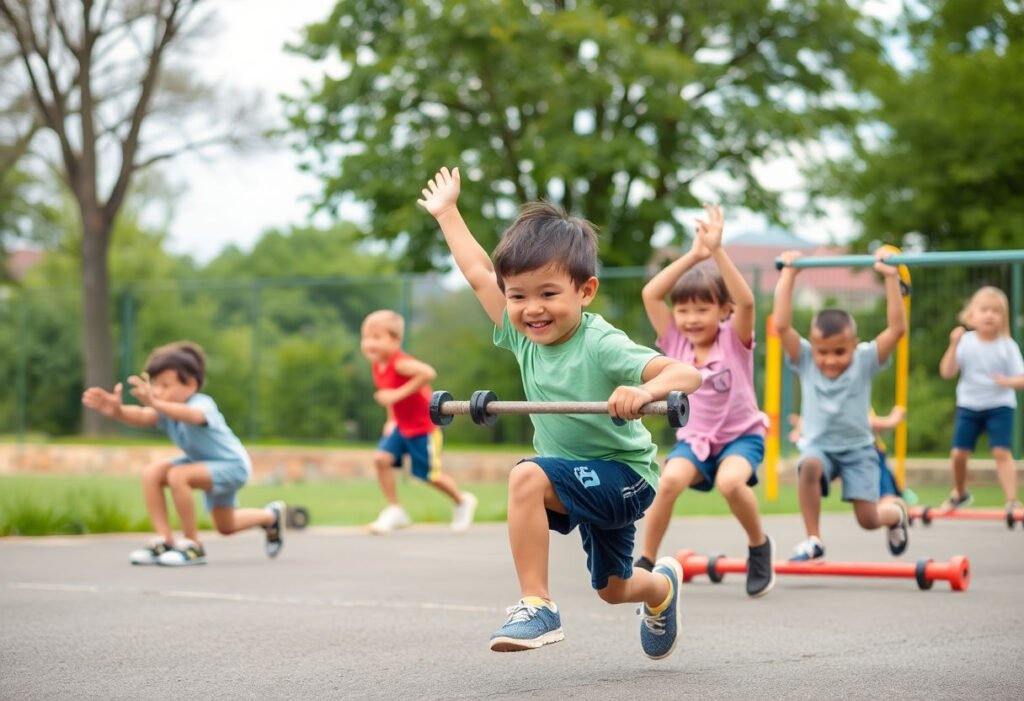Choosing the right exercise equipment for children is pivotal in fostering a healthy lifestyle and encouraging physical activity. In this guide, we delve into essential factors such as safety, age-appropriateness, and variety, which are crucial when selecting equipment for young users. We explore the developmental needs of children, offering insights into suitable equipment for different age groups. Moreover, the guide provides practical tips on involving kids in the selection process and budgeting considerations. By investing in thoughtfully chosen exercise tools, we can support our children’s fitness journeys, ensuring they lead active and balanced lives.
Key Takeaways
- Selecting the right kids exercise equipment is essential to foster a lifestyle that encourages physical activity and health.
- Safety is paramount; ensure equipment meets age-appropriateness standards and is tested for young users.
- Offering a variety of equipment can help maintain children’s interest and address different fitness needs.
- Involvement in equipment selection can boost children’s motivation and commitment to regular physical activity.
- Budgeting wisely without compromising on quality can provide children with safe and effective fitness tools.
Understanding Kids’ Fitness Needs
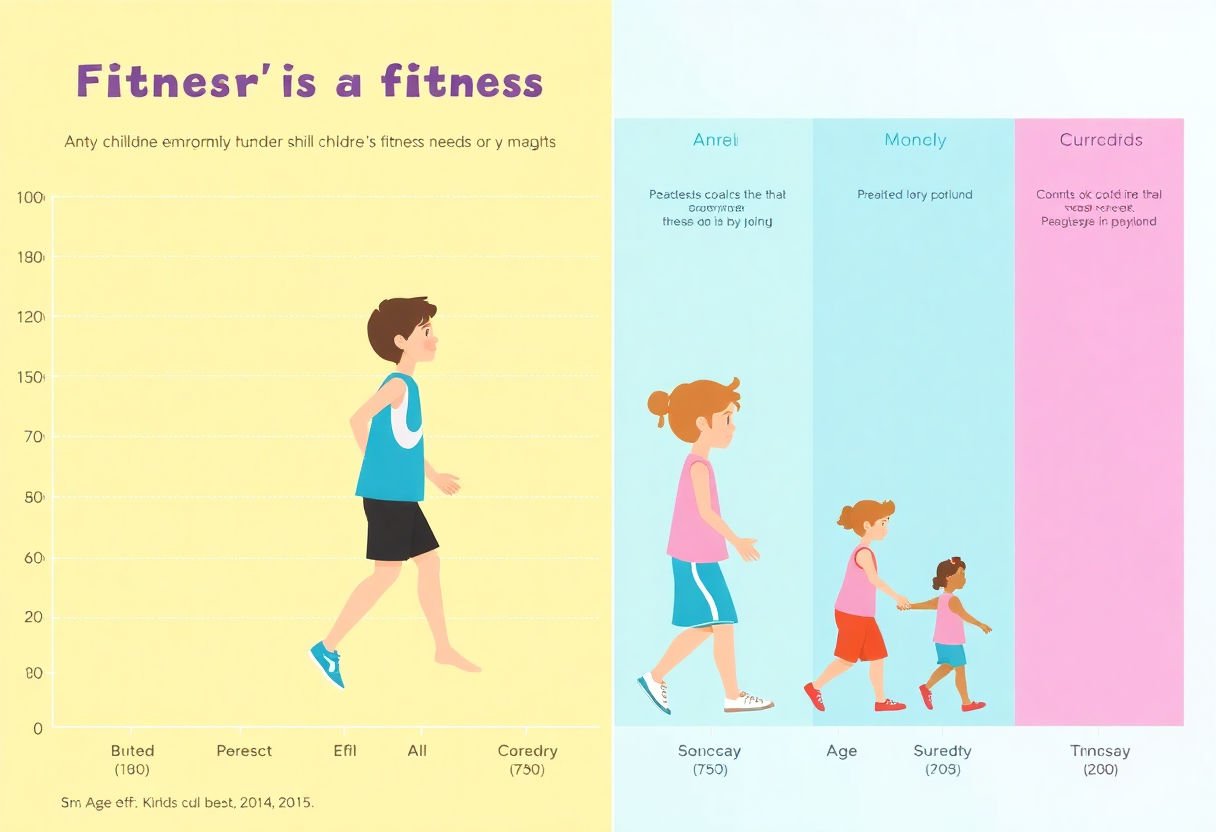
Children have unique fitness needs that are closely tied to their age and developmental stages. Recognizing these needs is paramount in ensuring they engage in activities that promote growth, coordination, and overall well-being. The Centers for Disease Control and Prevention (CDC) recommend that children aged 6 to 17 engage in at least 60 minutes of moderate to vigorous physical activity daily, which can range from structured sports to free play.
For younger children, activities that develop basic motor skills are crucial. These include running, jumping, and playing games that encourage agility and balance. Such exercises help enhance coordination and muscle development. As they age, children’s fitness requirements evolve, necessitating more complex physical activities that incorporate strength, flexibility, and endurance.
Adolescents, on the other hand, benefit from activities that boost cardiovascular fitness and muscle strength. This might include organized sports, structured exercise routines, or casual activities such as cycling and swimming. The emphasis here is on fostering a lifelong appreciation for physical activity.
Understanding the emotional and social aspects of fitness for children is equally important. Group activities not only fulfill physical needs but also contribute to social development, promoting teamwork and communication skills.
Key points to consider when understanding kids’ fitness needs include:
- Age-appropriate activities: Ensure exercises are tailored to developmental stages.
- Variety and enjoyment: Encouraging diverse physical activities increases engagement and motivation.
- Skill development: Focus on enhancing various physical skills progressively.
Comprehending these needs ensures that every child has the opportunity to develop physically, mentally, and socially through a balanced and enjoyable fitness routine.
Safety Considerations for Kids Exercise Equipment
Ensuring that the safety of kids exercise equipment is paramount for parents and guardians looking to encourage physical activity. Here are essential guidelines to consider:
-
Durability and Construction: Always verify that exercise equipment is constructed with sturdy, high-quality materials. Robust design minimizes risks of breakage, which could lead to injuries.
-
Age-Appropriate Design: Equipment should match the size and strength of the child. For example, weights and resistance bands should be light enough for children to handle comfortably. Consult manufacturers’ recommendations for age-specific suitability.
-
Secure Installation: Ensure that equipment such as trampolines or home gym systems are installed on flat surfaces and securely anchored. Unstable foundations can tip or collapse, causing accidents.
-
Safety Features: Look for additional safety features such as padded handles and slip-resistant bases. These features can prevent common issues such as falls or pinching injuries.
-
Supervision and Instruction: Children should be supervised by adults when using exercise equipment. Proper instruction on the use of equipment can further reduce the chances of misuse or accidents.
-
Regular Maintenance: Periodically inspecting equipment for wear and tear, such as frayed cables or worn grips, is crucial. Regular maintenance ensures continued safety and functionality.
-
Certified Equipment: Opt for equipment that meets safety standards set by organizations such as ASTM International. Certification indicates that the equipment has been tested for safety and quality compliance.
Implementing these considerations can stimulate an enjoyable and secure exercise environment, encouraging children to fully engage in physical activities with peace of mind.
Age-Appropriate Exercise Equipment
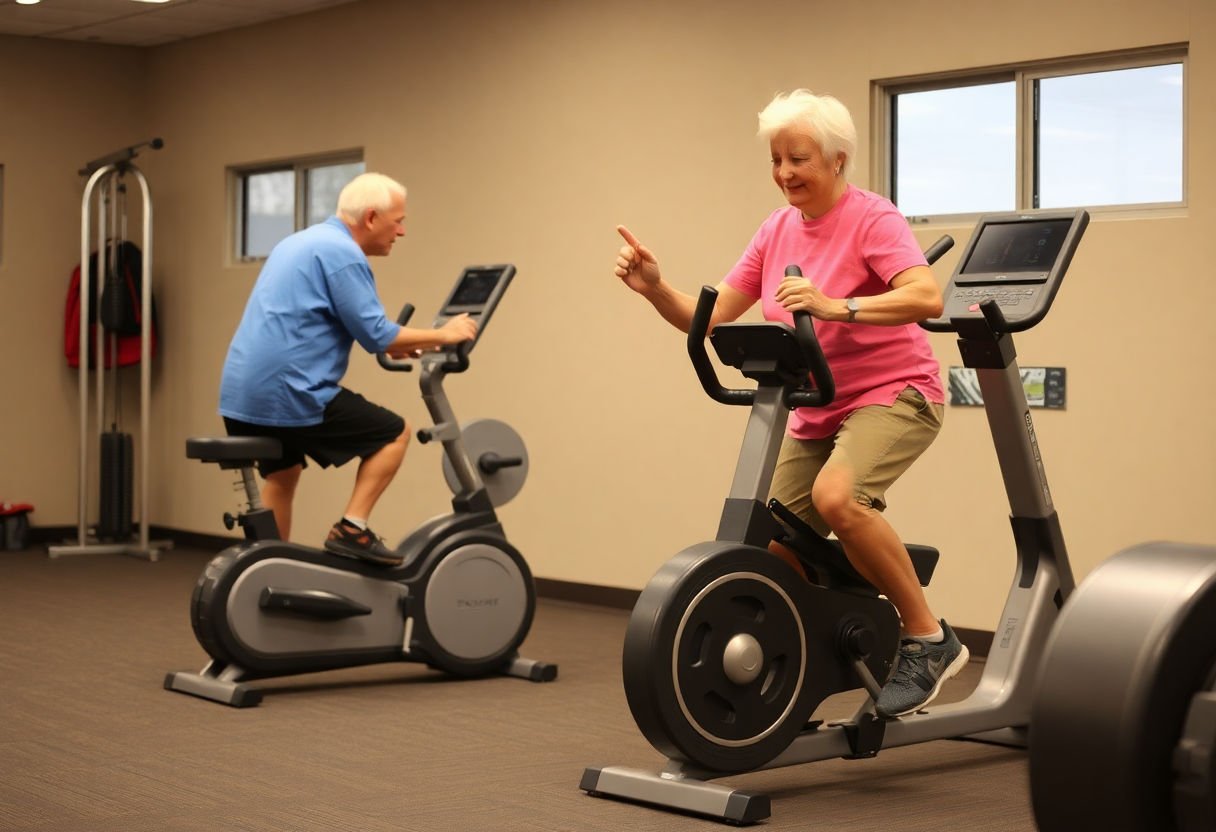
When selecting exercise equipment for kids, age-appropriateness is a critical factor. Children’s developmental stages dictate their physical capabilities and needs, thereby influencing what type of equipment is suitable and beneficial. For toddlers and preschoolers, engaging in playful, dynamic activities is essential. Equipment such as small foam blocks, child-sized hurdles, or soft balls can encourage balance, coordination, and gross motor skills. These items should be safe and colorful to capture the child’s interest without posing any risk.
For children aged 6 to 12, the focus shifts to building strength, endurance, and flexibility. Age-appropriate options include adjustable jump ropes, mini trampolines, and kids’ yoga mats. These options provide a variety of exercises that develop muscle strength and cardiovascular health, while ensuring that activities remain fun and not excessively strenuous.
Teenagers, on the other hand, become capable of engaging with more sophisticated equipment due to increased strength and endurance. Introducing resistance bands, light dumbbells, or even a youth-sized stationary bicycle can help cultivate a lifelong habit of fitness. However, it is crucial to stress proper form and technique to prevent injuries.
Incorporating a mix of equipment that aligns with each age group not only supports physical development but also keeps exercise exciting. It is important to remember that while equipment selection is vital, continuous supervision and encouragement play equally significant roles in fostering a positive exercise experience for young individuals.
Types of Exercise Equipment for Kids
In the quest to encourage an active lifestyle among children, it is essential to select appropriate exercise equipment designed specifically for their needs. Cardio machines, such as mini treadmills and kid-friendly exercise bikes, provide an excellent way for children to enhance cardiovascular health while having fun. These machines are often equipped with adjustable settings to accommodate different fitness levels and ensure safety.
Strength training equipment is also gaining popularity in the realm of kids’ fitness. Light weights and resistance bands tailored for young users help develop muscle tone and strength, promoting overall physical development. For a more comprehensive approach, consider multi-gyms that offer a variety of exercises in a single setup, emphasizing safety through child-specific designs.
Balance and coordination tools play a critical role in supporting motor skills in children. Equipment such as balance boards, sport scooters, and agility ladders can significantly improve a child’s balance and coordination. These tools are often used in games, making exercising an enjoyable experience.
Outdoor equipment, including pedal karts and trampolines, provides an opportunity for active play while enjoying the fresh air. Trampolines, in particular, offer an excellent way for children to expend energy while enhancing balance and coordination skills. Climbing structures are another fantastic outdoor option, encouraging physical strength and strategic thinking.
Ultimately, the right selection of kids’ exercise equipment will not only cater to their physical fitness requirements but also instill a lifelong appreciation for a healthy lifestyle. Choosing the right equipment can make a significant difference in keeping kids motivated and engaged in physical activities.
Where to Buy Kids Exercise Equipment
When it comes to purchasing high-quality kids exercise equipment, parents and guardians have a variety of options to explore. The key is to find reliable sources that offer products tailored specifically for children’s fitness needs.
Brick-and-mortar sporting goods stores such as Dick’s Sporting Goods and local establishments often have sections dedicated to children’s fitness. These stores allow you to physically inspect the equipment, ensuring that it meets safety standards and is age-appropriate. Highly knowledgeable staff can provide recommendations based on your child’s age and activity level.
For those who prefer the convenience of online shopping, Amazon and Wayfair offer extensive selections of kids exercise equipment. These platforms boast customer reviews, which can be invaluable in assessing product quality and suitability. Online retailers often provide competitive pricing and the convenience of home delivery.
Specialty retailers like Creative Play Solutions focus exclusively on kids’ fitness products, offering a wider array of equipment that caters specifically to children. These retailers usually concentrate on items that encourage both safety and fun, ensuring a positive fitness experience for kids.
Additionally, consider exploring second-hand options on platforms like eBay or local neighborhood apps such as Nextdoor for budget-friendly alternatives. Ensure that used equipment is thoroughly checked for safety and usability.
Finally, some fitness brands such as Fisher-Price and Little Tikes offer dedicated equipment lines for kids, providing reliable options recognized for their focus on safety and child-friendly design. By selecting from these reputable sources, you can ensure that your child’s exercise equipment is both secure and motivational, fostering an enduring active lifestyle.
Budgeting for Exercise Equipment
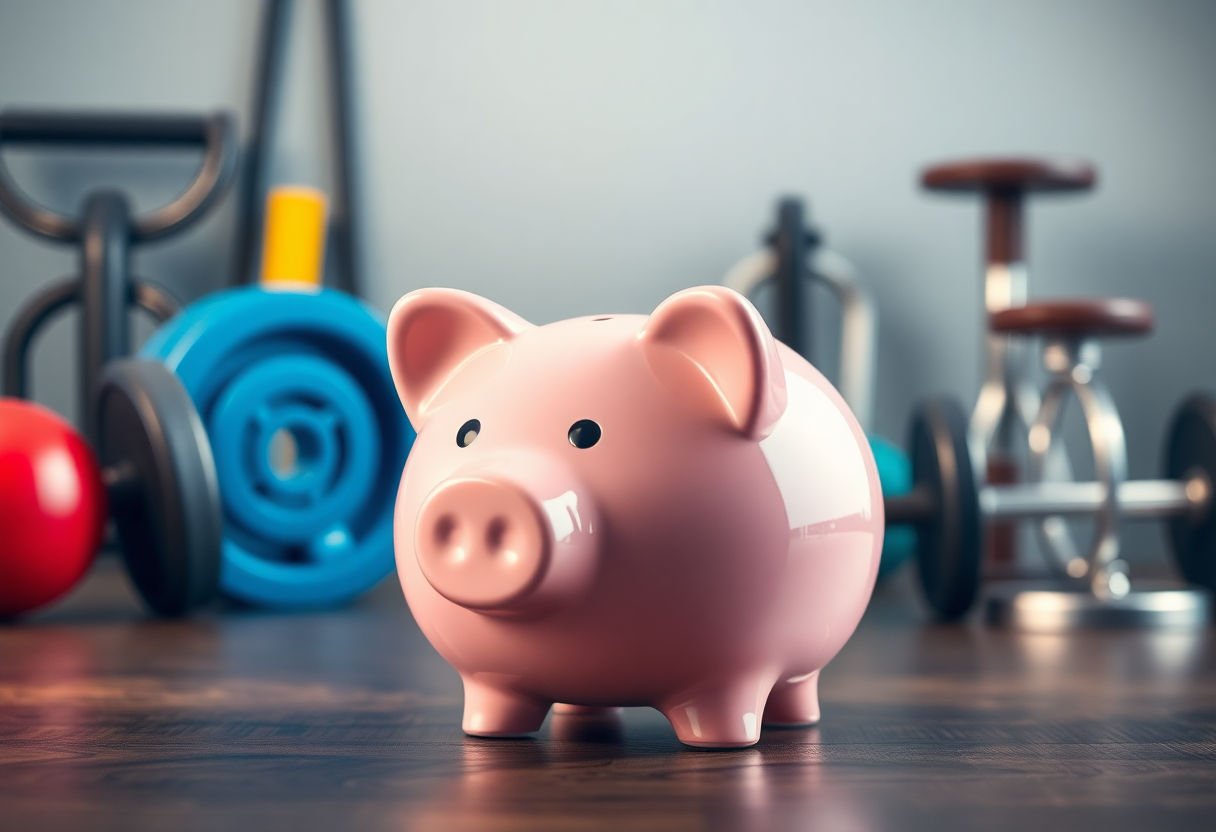
When considering the purchase of exercise equipment for kids, developing a practical budget is crucial. Investing in the right equipment can promote a healthy lifestyle without straining your finances. Here are some pivotal considerations:
-
Prioritize Quality Over Quantity: It’s essential to focus on the longevity and safety of the equipment. High-quality items may cost more upfront, but their durability can save money in the long run. Look for equipment backed by positive reviews and known for their safety features.
-
Assess Necessary Equipment: Evaluate your child’s specific fitness needs and interests before making a purchase. For example, while some children might benefit from a balance bike, others may require a trampoline. Prioritizing essential items prevents unnecessary spending.
-
Set a Realistic Budget: Determine how much you can realistically allocate to this purchase. Consider any seasonal discounts or sales that might help stretch your budget further.
-
Explore Second-Hand Options: Consider purchasing gently used equipment, which can be significantly cheaper. Websites, community sales, and online marketplaces often have listings for quality second-hand equipment.
-
Take Advantage of Multi-use Equipment: Multifunctional equipment can serve various purposes and is often more economical. For instance, a simple set of resistance bands can be used in numerous exercises, providing versatility at a lower cost.
Engaging in these steps not only ensures you stay within budget but also helps create a robust and safe exercise environment for your kids. Maintaining a budget without compromising on these key aspects ensures that your investment not only fosters activity but also guarantees long-term satisfaction and safety.
Involving Kids in Choosing Exercise Equipment
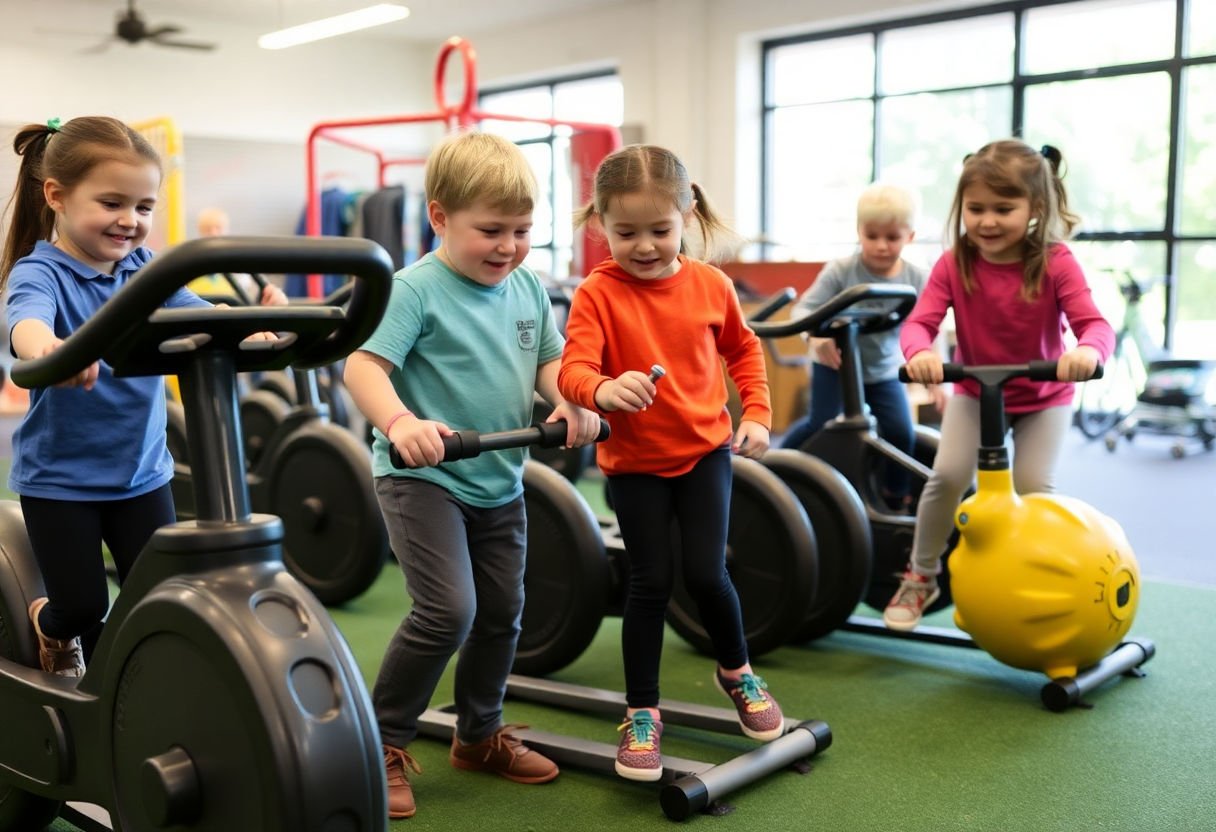
Involving children in the selection of their exercise equipment can be pivotal in fostering an early affinity for an active lifestyle. Engaging kids allows them to take ownership of their fitness journey, making it more likely they will enjoy and utilize the equipment. Here are some strategies to successfully involve kids in this process:
-
Encourage Exploration: Allow kids to explore a variety of exercise options. Let them sample different equipment at a store or a friend’s house to see what excites them most. This hands-on approach can help them understand how each piece works and decide what they enjoy.
-
Focus on Fun: Kids are more likely to remain active if they associate exercise with fun. Equipment that incorporates elements of play—such as trampolines, mini obstacle courses, or dance-based video games—can capture their interest and encourage regular use.
-
Discuss Their Goals: Engage your child in a conversation about what they want to achieve with their exercise routine. Whether they’re interested in improving sports skills, building strength, or simply having fun, understanding their goals can guide your choices.
-
Empower Decision-Making: Give children a say in the final decision by offering them a selection of safe, age-appropriate options. This empowerment builds confidence and increases their commitment to using the equipment.
-
Ask for Feedback: After a trial period with the new equipment, solicit feedback from your child. Are they enjoying it? Is it challenging them? Use their input to make any necessary adjustments or to introduce new activities.
These strategies not only make the selection process more enjoyable for children but also help instill a sense of responsibility and enthusiasm towards maintaining an active lifestyle.
Benefits of Regular Physical Activity for Kids

Regular physical activity is essential for children’s development and overall well-being. Engaging in consistent exercise provides numerous health benefits that are critical during the formative years.
One of the primary advantages is the enhancement of physical health. Regular activity helps maintain a healthy weight, reduces the risk of developing chronic illnesses such as type 2 diabetes and cardiovascular disease, and strengthens bones and muscles. Active children are more likely to experience better cardiovascular fitness and healthy growth patterns.
Beyond physical health, exercise significantly impacts mental well-being. Physical activity stimulates the production of endorphins, which can help reduce feelings of depression and anxiety. Children who engage in regular exercise often exhibit improved mood, self-esteem, and cognitive functioning. Studies suggest that physically active children may perform better academically due to heightened concentration and memory retention.
Social benefits are also notable. Participating in team sports or group activities encourages social interaction and helps children develop important life skills such as teamwork, communication, and leadership. These experiences can foster a sense of belonging and improve social competence.
Moreover, encouraging regular physical activity from an early age fosters the development of a habitual lifestyle that prioritizes health and fitness. Children who form these habits are more likely to become active adults, further extending the multitude of benefits into later stages of life. Ultimately, supporting and motivating children to remain active paves the way for a healthier, more fulfilling future.
Conclusion
Selecting the right exercise equipment for kids is crucial in fostering a lifelong habit of physical activity and health. By prioritizing safety, age-appropriateness, and variety, parents can provide environments where children thrive physically and mentally. As children grow, their fitness needs evolve, making it important to adapt equipment and activities. Engaging children in the selection process not only promotes interest but also ensures sustained motivation. Looking ahead, cultivating an interest in physical activity will have lasting benefits, helping to address future health challenges. Encourage your kids to explore different activities and find joy in staying active.
Frequently Asked Questions
What factors should I consider when selecting exercise equipment for my child?
When selecting exercise equipment for your child, consider their age, developmental stage, and interest. Ensure the equipment meets safety standards and has appropriate size and features for their capabilities.
How can I ensure the safety of my child’s exercise equipment?
To ensure safety, choose equipment from reputable brands known for quality construction. Regularly inspect the equipment for any signs of wear and tear, and make sure to supervise young children during use.
Is there a difference between exercise equipment for toddlers and older kids?
Yes, toddler equipment is typically simpler, focusing on developing basic motor skills, while equipment for older kids offers more complexity to challenge their growing strength and coordination.
How can I motivate my child to use exercise equipment regularly?
Involve your child in the selection process to choose equipment they find exciting, and integrate exercise sessions into daily routines, making fitness fun and engaging through games or family activities.
Where can I purchase high-quality exercise equipment for kids?
High-quality exercise equipment for kids can be found at specialized sports and fitness stores, online platforms, or through trusted retailers offering a range of age-appropriate options.
